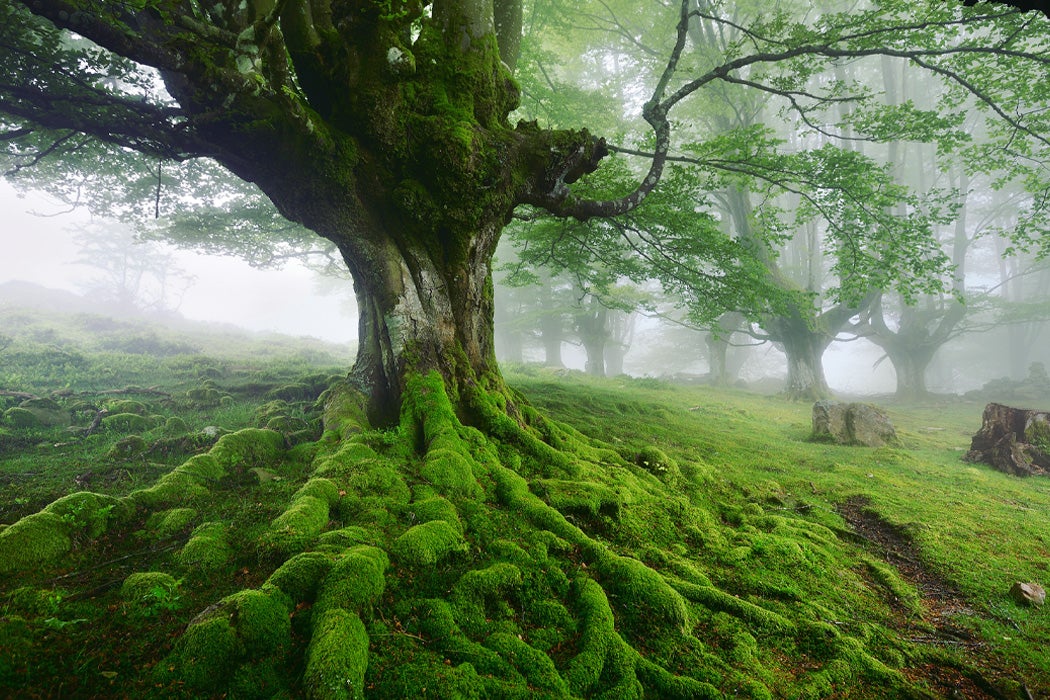Every city needs its trees. They reduce air pollution. They cut down on wind. They absorb and store carbon in their massive trunks. In summer, their canopies provide welcoming shade, cooling the grounds and houses underneath, which saves energy and money on air conditioning. But it turns out that trees can perform yet another service essential for humans. They can also help reduce soil pollution caused by nutrients leaching into the grounds from commercial fertilizers used in agriculture, gardening, and lawn care.
First developed in the early twentieth century, commercial fertilizers helped humankind increase food production, fight famines, and make harvests more dependable. But these benefits came at a price. Unlike organic fertilizers that decompose slowly, such as manure or compost, commercial fertilizers are available to plants immediately. Consequently, they also wash out quicker, leaching into ponds, rivers, and lakes. This over-fertilization causes the infamous algae blooms, which decrease water oxygen levels and smother aquatic life. Many urban waterways suffer from over-fertilization by the excess nitrogen and phosphorus. In the summer, these waterways turn green, filling the air with an unpleasant stink.
Scientists at the University of Minnesota were wondering if planting more trees in cities might help with that problem. They ran a study to evaluate whether trees could absorb some of the excess nitrogen and phosphorus that percolate through the soil rather than let it reach the waterways.
Using lysimeters—devices that can measure the volume and chemical characteristics of water in soil—scientists assessed the amount of nitrogen and phosphorus trickling underneath thirty-three trees of fourteen different species in city parks in Saint Paul, Minnesota. To compare whether trees can absorb nutrients better than treeless urban areas, the scientists also took similar measurements in turfgrass spots. Installed at about two feet deep, the lysimeters collected ground water samples for over two years, except during winter and drought periods, measuring dissolved organic carbon, nitrogen, and phosphorus.
It turned out the results were nutrient-specific. Compared with turfgrass, trees removed a similar or higher amount of nitrogen the first year, but not the second. In fact turfgrasses seemed to absorb more nitrogen than trees during the second year—although the authors note that the results may have been affected by droughts followed by heavy rains, which could have changed nitrogen fluxes.
Weekly Digest
But trees—and particularly deciduous species—did a good job of eliminating phosphorus from the ground. “Trees reduced P [Phosphorus] leaching compared with turfgrass in both 2012 and 2013, with lower leaching under deciduous than evergreen trees,” the team wrote in the study. Moreover, compared to industrial solutions for phosphorus cleanup, trees also proved to be a cost-efficient option. When the team applied their measurements to the Mississippi River’s urban watershed, which includes about 1.5 million trees, they found that the trees helped achieve significant infrastructure savings. In 2012, the forested grounds prevented half a ton of phosphorus from spilling into the water, and the next year that amount more than doubled. That saved several million dollars in infrastructure costs. “Removing these same amounts of P [Phosphorus] using stormwater infrastructure would cost $2.2 million and $5.0 million per year (2012 and 2013 removal amounts, respectively),” the authors wrote.
Because the measurements varied significantly from one tree to another, it wasn’t clear which species were best at removing phosphorus. “At this time, we cannot confidently recommend tree species that would most reduce nutrient leaching,” the authors wrote—but overall, creating forested areas would be an important factors in removing excess soil phosphorus. “While the effect of any individual tree is fairly small, their aggregate effect can be important.”







